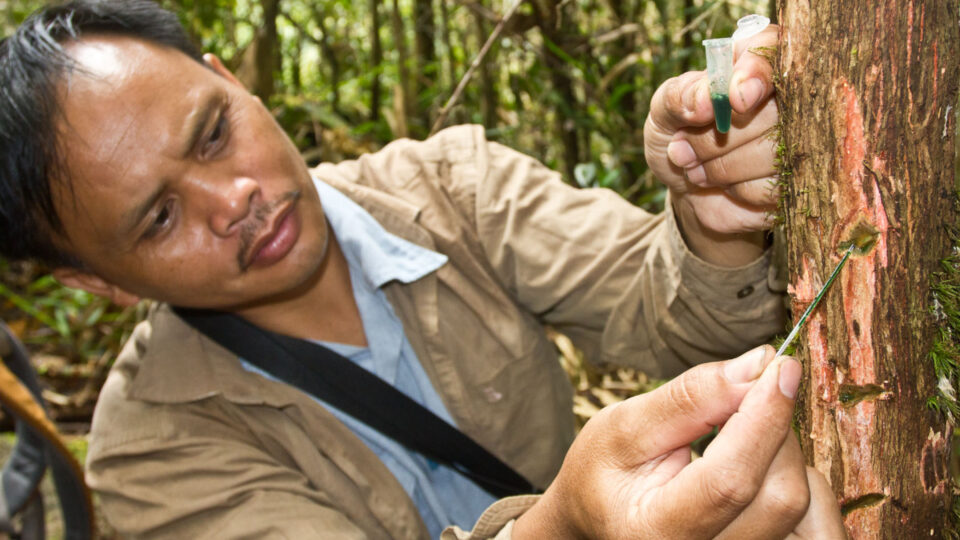Large amounts of metal in soil are generally bad for plants. But there are about 700 species of plants that thrive in metal-rich soils. These plants don’t just tolerate minerals from soil in their bodies but actually seem to hoard them to ridiculous levels.
In areas where soils are naturally rich in nickel, typically in the tropics and Mediterranean basin, plants have either died off or have adapted to become nickel loving. Slicing open a tree with this adaptation produces a neon blue-green sap that is actually one-quarter nickel, which is far more concentrated than the ore that typically feeds commercial nickel smelters.
A group of researchers from the University of Melbourne and other institutions is investigating whether this phenomenon is not just interesting but might also be of real commercial value. They established a plot of land in a rural village in Borneo and have been harvesting growth from nickel-hyper accumulating plants. Every six to twelve months, a farmer shaves off one foot of growth from these plants and either burns or squeezes the metal out. After a short purification, they end up with about 500 pounds of nickel citrate, potentially worth thousands of dollars on international markets.
Phytomining – extracting minerals from hyper-accumulating plants – cannot fully replace traditional mining techniques. But the technology could enable areas with toxic soils to be made productive and might allow mining companies to use plants to clean up their former mines and waste while actually collecting some revenue.
There are other plants that suck up cobalt, zinc, and similarly crucial metals. With growing demand for metals, perhaps it is time to harvest them on the farm.
**********
Web Links
Down on the Farm That Harvests Metal From Plants
Photo courtesy of the University of Queensland.
Earth Wise is a production of WAMC Northeast Public Radio.
